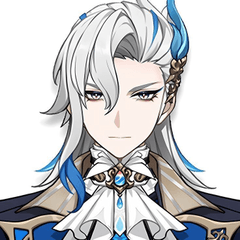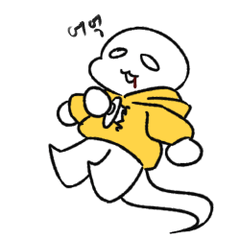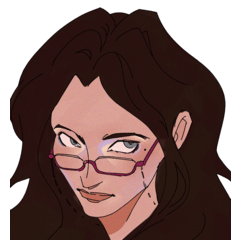How to make use of the Fish-eye perspective!
Hello! Today I’m gonna share some tips I have for you to get comfortable with the fish-eye and 5pt perspective so you may use them in your drawings! I really like drawing perspective and I’m happy to help if you struggle with it!
5-point perspective
We’re going to start with explaining 5 point perspective. As the name suggests it has 5 vanishing points unlike the other common perspectives we often use like 2 point and 3 point perspective. I’d strongly advise you get comfortable with the basics of perspective first before attempting do draw this one freehand.
When we use 5 point perspective we usually use it when we want to show more than our eyes could see; for exemple if you want to draw your room you will have to look left and right to draw both corners of the room, and to be able to show the whole room in one drawing, you would have to use 5pt perspective.
The further away from the central vanishing point your object gets and depending on how close the vanishing points are from each other, there will be more distortion in the perspective and the less realistic it will become.
If you’re unfamiliar with this perspective and don’t quite understand it, I recommend you try drawing boxes in perspective first to get a hang of it. I had a hard time at first drawing curved surfaces in 5pt perspective at first but here’s a tip; you can draw a box , then grab the curve tool and do like the drawing above!
I’m not sure if the new fish-eye perspective ruler is only in the EX version so here’s how you can draw without the ruler.
As you can see only the red lines are straight while the others are curved, this is mostly the difference between the 5pt perspective and fish-eye.
Pick a 5pt perspective guideline from the assets and zoom the picture to the angle you want for your drawing.
Here’s the assets i used below;
If you want the ruler not to be distracting use this tool in your layer property panel and it will change it to a lighter color so you can line over it, you can also change it’s color.
Now when drawing the elements of your environment/ character follow the perspective lines, if you’re not comfortable yet first draw simple shapes like cubes and then detail the shape later. Notice that here the bridge is like I said earlier converging to the straight vanishing point, while also following the other curvilinear vanishing points. Just remember the notion of space and XYZ axis’s and you will improve your perspective in no time.
This perspective is quite drastic and is often used to show off a part of the drawing you want to be the focus, like for exemple to showcase the massive height of a cliff or your character’s expressions. It’s why you see it often in animes where they use a very exaggerated fish-eye effect to show a character’s distress/fright.
When you’re done sketching your scene it’s time to block in your values. As you see on the picture the foreground is darker, and that’s because of atmospheric perspective. The further an object is, the lighter is becomes and the less details it has , so also keep atmospheric perspective in mind when painting especially is it’s a background/ environment you’re doing.
Then when you’re done with blocking the values you can start painting the details of lightning and colors.
Again, when you’re not sure about the perspective start with simple shapes like cylinders, cubes and rectangles to place your objects in your scene. When you’re sure about their emplacement, start drawing the details.
Also just drawing fun shapes in perspective is a great exercise to get use to drawing in perspective so I recommend you do it when you can.
Fish-eye perspective
Fish-eye perspective is a little different as it’s often used in photography, so when you use fish-eye perspective in a drawing it’s almost like you’re drawing through a camera lens.
I’m gonna show you how to use the fisheye ruler and another technique that doesn’t require it.
I’m going to use a panorama to show the difference between the two
When you crank up the fisheye perspective you can clearly see that it’s more like a camera lens.
As you can see here, none of the vanishing points have straight lines anymore and this can even give more dynamism when used right.
Drop the second panorama asset I linked above or something similar and drop it into your canvas.
On you tool property there are two perspective sliders, one called perspective and the other fish-eye perspective.
The perspective one will pretty much zoom in and out and let you change the distance between vanishing points.
The fish-eye perspective slider will apply a level of fish-eye perspective depending on what you pick.
The picture above as a low number for both sliders.
Here I increased the fish-eye perspective slider and this is what it does.
And this is how it will look when both sliders are to a higher number.
This asset is great because there are guidelines to help you.
Depending on the value of your sliders you can make the fisheye effect how strong or not you want it to be.
When you use the sliders at higher values, it’s a great way to use the perspective to showcase something bigger in your drawing like the buildings and clouds here for exemple.
You can also add a fish-eye effect in clip studio without having to draw a 5pt perspective yourself.
Here for exemple this sketch is drawn with 3point perspective. If you want to add a little something more to your drawing this is a quick way to make it a bit more dynamic.
Go to filter> distort and fish-eye lens.
Play with the slider until you get something you like.
And there you go, sometimes if you abuse of the sliders it might look weird so I usually keep it tame.
If you’re struggling with drawing characters in perspective try breaking down the human body with simple shapes like these to get the gist of the pose.
Then sketch the overall silhouette of your characters to be more precise.
You can then clean everything and had their attire, remember to make every objects/parts of their outfits converging to the perspective so that it’s all believable.
The same applies to the background you draw with your characters. Remember the XYZ axis’s and the atmospheric perspective for when you color the drawing.
And again, if you feel the drawing isn’t dramatic enough you can always add a bit of the fish-eye filter to make things pop a bit more.
The fisheye perspective ruler
I’m really happy that clip studio recently put out the Fisheye perspective ruler as a recent update. I’m really glad we finally got it and hope we can use 3D models with it in the future.
Here’s how you can use the ruler.
I’m going to start with a simple sketch of what I want my drawing to be.
Similar to the other perspective ruler you have your vanishing points and horizon line and the icons you need to change the perspective.
1- Move the vanishing points
2-Move the horizon line/eye level
3-Move the entire ruler
4-Move the vanishing point according to the guideline
5-Just moves the guideline but not the vanishing point’s placement
You can also add the perspective grid and change the size of the grid in your tool properties.
This is what it will look like when you put down the first vanishing point. Two crosses will appear and the distance between these two crosses will determine the intensity of your perspective.
Start by putting down the first vanishing point which will determine how curvy your perspective will be. If you drag the first vanishing point further you will have a broader perspective. If you drag the first point close to the other though everything in the perspective will be close together.
You can add more than 5 vanishing points.
You can modify them after putting them down like the other perspective ruler, you can change the vanishing point’s position and move the entire perspective around the canvas with the icons that appear when you click on your perspective points with the object tool.
If you drag the vanishing points close to each other the perspective will be condensed and stuffy while If you drag the vanishing point far way from the other the globe will be bigger and less dense allowing for more space.
Yu can use both to your advantage to tell different stories.
I’ll start blocking the main shapes first because the car I’m trying to draw is very curvy on its own so I don’t want to draw it wrong.
To know exactly where the middle of my car is I’m going to trace the diagonals of my box and then draw a line going through the diagonals’ intersection while following the perspective.
Also make sure to check the “snap ruler” in your brush’s settings or it won’t follow the perspective ruler.
Then trace everything else, turn off the perspective ruler when you need to draw organic shapes and put it on again to follow the perspective.
Let’s try another one where the vanishing points are higher and closer to each other.
This composition will help me focus mainly on the characters rathe rather than the environment. these types of composition can be used to greatly emphasize something about the painting, here it’s to show the characters dynamics.
I’m going to start with the background and you can already see this perspective is quite exaggerated.
For the characters I will draw cubes first again and trace the diagonals of every face pf the cube to have proper guidelines so I’m more prepared to draw them in the right perspective.
I then go on detailing the rest and block in the values. It can be quite tricky to draw people in fisheye perspective because we’re not user to see it often and have to learn this new perspective, which is why drawing them in simple shapes first makes things easier.
As I said earlier with this perspective you can draw small and cramped places like the inside of a car .
First start blocking the important objects that take place like the seats and windows.
After drawing the most important shapes you can start refining the drawing and add your characters in.
Remembering the XYZ axis’s can really help understand the notion of space and can help you not get lost in the perspective so keep those in mind while drawing.
As you can see it’s way different than the perspective in this picture which is a large shot and thus type can be great for animation for exemple.
Thank you for reading !
I hope I could help you if you struggle with perspective! Again thanks for reading, you’re welcome d to my instagram;
See you next time!
























Comment